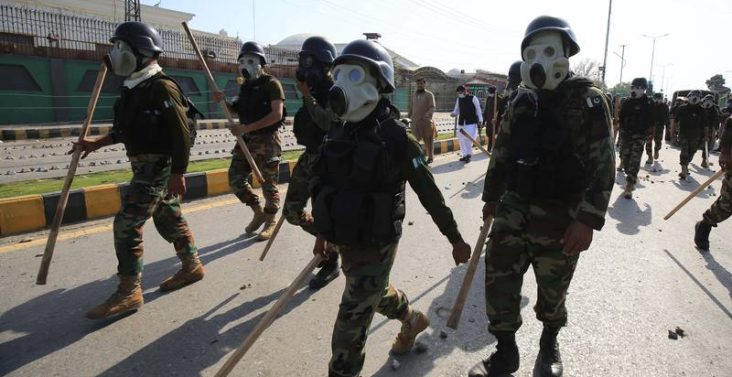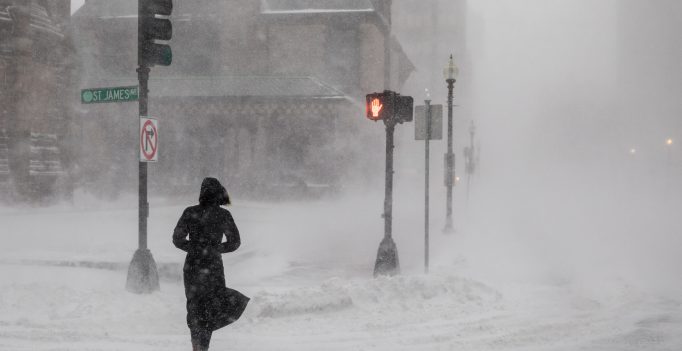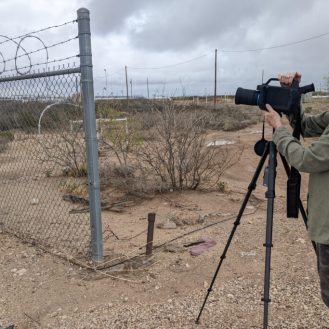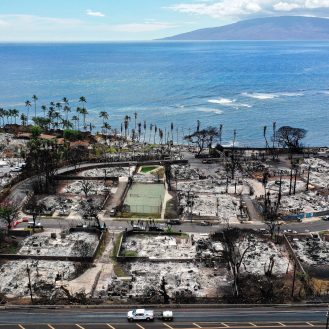Winter storm and flood alerts continue this week for millions of Americans following a weekend of flash floods in states such as Pennsylvania and Illinois, where many residents were forced to evacuate their homes as they took on water. It’s the third weekend this month when large swaths of the country have been doused with extreme wintry conditions—a trend that’s becoming increasingly more likely because of climate change, recent analyses show.
In northeastern Illinois, unseasonably warm temperatures destabilized a pileup of ice on the Kankakee River and unleashed major flooding, prompting evacuations of about 200 homes. “There’s always ice backups this time of year, but I’ve never seen it this bad,” one resident told a local news station.
Several residents in the Pittsburgh metro area were also forced to evacuate on Sunday—one person by ladder—after the state saw record rainfall as a coastal storm drenched much of the Northeast. At one point, some 15 million Americans in the region were under flood watch that day, with another eight million facing winter and snow alerts, ABC News reported.
Arkansas residents also found themselves inundated by flash floods after record-high water levels on the Cache River led to a levee failure Sunday evening. Winter storms over the prior weekend brought freezing rain to northern and central parts of the state, and the National Weather Service said the river was at its highest water levels in six years.
The weekend floods top off a month that has been especially active with winter storms, which recent reports suggest are being driven largely by human-caused climate change.
ClimaMeter, an international consortium of climate scientists, released a rapid attribution analysis last week that examined the winter storm systems that occurred Jan. 12-14 across large swaths of the United States. The report found that January saw increased precipitation largely due to climate change, with natural climate variability playing a modest role.
“Our analysis reveals that winter storms in the USA remain a tangible threat, occurring with temperatures akin to those in the past but yielding increased snow or rain precipitation,” Favide Faranda, a scientist with the France-based Institut Pierre-Simon-Laplace and a co-author of the study, said in a statement. “These findings impose additional challenges on adaptation strategies in a globally warmer climate, where winter storms still have the potential to instigate significant disruptions.”
The mid-January storms brought about exceptionally low temperatures from the Northwest to the Midwest, disrupted ground and air travel, caused power outages for hundreds of thousands of households and prompted severe winter weather alerts in more than 17 states.
Research has also shown that many of the regions that were inundated over the past weekend are also expected to see more extreme flooding in the coming years due to climate change. The latest National Climate Assessment projects that precipitation increases will be among the most severe in the Northeast. And city and state data show that Northeast Illinois is already experiencing a notable uptick in flooding, which is now thought to be Chicago’s most pressing climate risk.
As the storms let up in the Northeast, California and other Western states are preparing for a major downpour as an atmospheric river closes in on the region. Forecasters at the National Weather Service warned this week that the event—which acts like a fast-running river of moist air high up in the atmosphere—could bring destructive winds, rainfall and flooding across much of the West Coast from Wednesday morning through Friday.
Those storms, too, are likely being influenced by global warming.
The ClimaMeter consortium ran an analysis of the Jan. 22 winter storm in San Diego. The city is known for its dry climate but was taken by surprise by an unexpectedly strong Pacific front last week. The West Coast is a bit odd when it comes to climate impacts. While the region remains in a megadrought, when storms do hit, they have tended to unleash more and more water over the years, a growing body of research has shown, which can cause major runoff and flooding. Southern California floods, for example, have become 15 percent wetter over the past two decades, the consortium’s report found.
More Top Climate News
There May Not Be a Next U.S. Climate Envoy: A national defense bill that took effect last year could upend President Joe Biden’s ability to replace John Kerry when he steps down as special presidential climate envoy in a few months, E&E News reports. That’s because Republicans had obscurely tucked a provision into the law that requires special envoys appointed by the president to receive Senate confirmation. If Biden’s nominee gets blocked or forced out after serving just a temporary appointment, it could limit the U.S. in its ability to coordinate and carry out climate policy at the global level.
Biden Publishes Watered-Down Gas Stove Efficiency Rule: The Biden administration published new energy efficiency standards Monday that had originally been expected to affect roughly half the nation’s newly installed gas stoves, reducing the overall carbon footprint of the appliances. After intense GOP backlash, however, the final rule is far less stringent than what had initially been proposed, Rachel Frazin reports for The Hill. The final version, which also lowered the stoves’ efficiency requirements compared to the proposal, will cover only 3 percent of gas stoves on the market.
Climate Activists Target Mona Lisa in Latest Soup-Throwing Protest: Two climate activists on Sunday hurled soup at the glass-protected Mona Lisa painting at the Louvre Museum in Paris and shouted slogans advocating for a sustainable food system, Sylvie Corbet reports for the Associated Press. “What’s the most important thing?” they shouted. “Art, or right to a healthy and sustainable food?” It’s the latest in a string of controversial demonstrations in recent years that have targeted famous artworks and divided the climate movement regarding what’s considered an appropriate way to protest.
Today’s Indicator
$223 billion
That’s how much money is being invested over the next decade to produce natural gas around the world, according to a new study, driven by demand in Europe and led largely by new U.S. developments.









